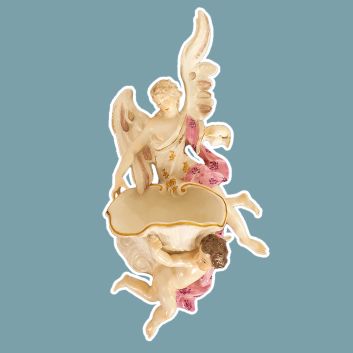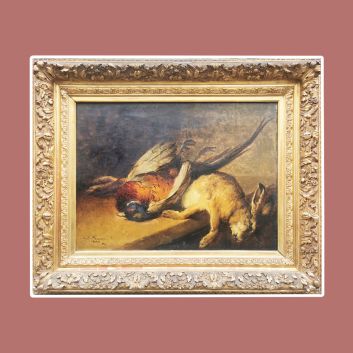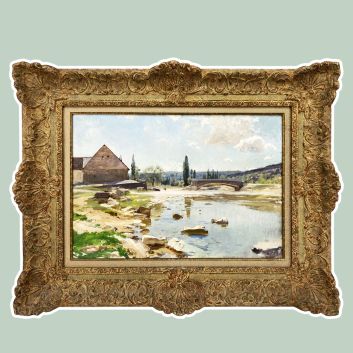Rating and value of Thomire clocks, sculptures and candelabra

The beginnings of Thomire
Pierre-Philippe Thomire was born in Paris in 1751 and died in 1843. A great master of bronze at the end of the 18th century and beginning of the 19th century, he learned from the greatest masters of statuary: Augustin Pajou and Jean-Antoine Houdon. The artist then trained with the bronze worker Pierre Gouthière. In contact with the great master - who himself worked for Marie-Antoinette - Thomire excelled in gilding and chasing bronze. At the age of 25, he set up his own business and made the bronzes for the coronation carriage of Louis XVI. He was then appointed to the Manufacture de Sèvres. At the same time, he received orders for the great royal castles from Queen Marie-Antoinette and executed prestigious works preserved, for example, in Versailles but also in the Château de Compiègne.
Response in less than 24h
Rating and value of Thomire's bronze creations
These price estimates are based on authentic, quality Thomire bronzes, but it should be noted that actual prices may vary depending on the historical significance, rarity, provenance, size, complexity of the sculpture and state of preservation of each individual piece. It is recommended to consult specialized experts and auctioneers for accurate and up-to-date appraisals of Thomire bronzes.
Object type | Estimate |
|---|---|
Post | 10 000 - 500 000 € |
Pendulums | 3 000 - 200 000 € |
Vases | 3 000 - 150 000 € |
Sculptures | 5 000 - 300 000 € |
Decorative objects | 2 000 - 100 000 € |
Response in less than 24h
The Thomire house in the 19th century
At the end of the 18th century and the suppression of corporations, Thomire suffered the torments of the revolution. Nevertheless, the artist reveals himself again under the First Empire where he is awarded a gold medal at the Public Exhibition of Industrial Products. His success goes beyond the borders, the artist devotes a large part of his production to export. In 1809 he was granted the patent of supplier to Their Imperial and Royal Majesties. The " Empire fashion" specific to this period allows the artist to blossom fully. Fond of mythology and antiquity, he put in his works nymphs, gods, and other mythological references to which he incorporated elements that were completely Empire. He made a specialty of subject clocks where he chiseled in bronze works that were truer than life, which achieved important results in auctions. After the fall of the Empire, his popularity did not wane and the house of Thomire continued to supply the royal clientele during the Restoration.

The example of a Thomire clock at auction
This clock of Thomire presents important dimensions: 60 cm height! It can almost be called a "ministry clock". It features the god Apollo, carrying his lyre on his back and leaning on a column in which the dial is inscribed. At the top of this column is a frieze composed of acanthus leaves, a reference to antiquity, and five stars which are typical empire motifs. The base of the clock is also decorated with Empire style motifs: the garland, the butterflies (traditionally associated with Empress Josephine but which may be here a reference to Psyche), and a frieze of lotus leaves. It is gilded with matte.
The representation of the god of song, the arts and beauty is a subject particularly appreciated by the artist. Similar clocks can be found in the Hermitage Museum in St. Petersburg, Windsor Castle in England, Château de la Malmaison and the Musée des Arts Décoratifs in Paris.
An exceptional model sold at auction at Hôtel Drouot for €3,120.
Response in less than 24h
Related topics
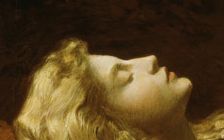
The value of works, paintings by Victor Gabriel Gilbert
Victor Gabriel Gilbert was a painter of genre scenes at the end of the 19th century. His works are still of great value today.
Read more >
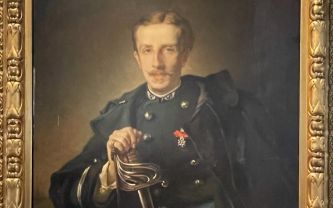
Rating and value of works, paintings and drawings by Jean-Franço...
Jean-François Portaels is a 19th-century Orientalist painter, whose paintings are highly prized at auction. His price is stable.
Read more >
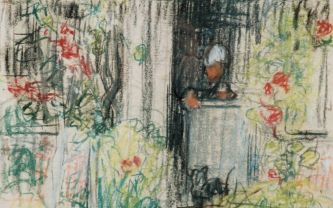
Rating and value of works, drawings, paintings by Charles An...
Charles Angrand was a neo-realist and symbolist painter of the 19th century who produced drawings and paintings with a high market value.
Read more >
Secure site, anonymity preserved
State-approved auctioneer and expert
Free, certified estimates
